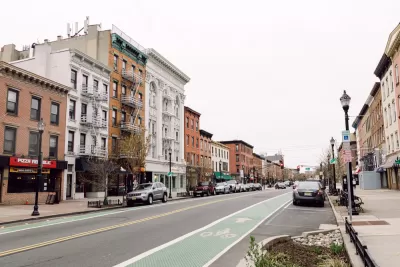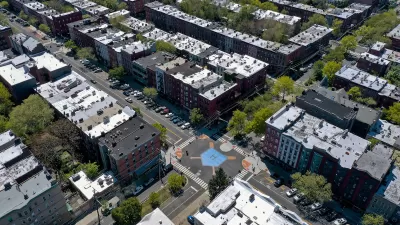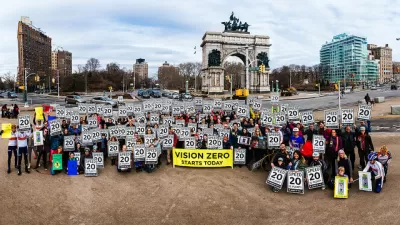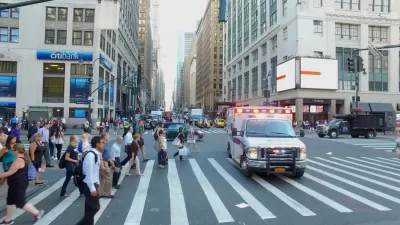Hoboken has spent the past several years investing in new bike infrastructure, and traffic collisions of all kinds have since decreased.

Eve Kessler reports:
Hoboken, a New Jersey city of about 54,000 souls directly across the Hudson from New York City, shows what can be accomplished when a municipality really focuses on the zero of Vision Zero — the “Mile Square City” has recorded no traffic fatalities for three straight years.
According to Kessler's sources at the city, Hoboken has prioritized bike lane infrastructure and committed to an identity as a pedestrian-oriented city to accomplish major progress in traffic safety. From 2019 to 2020, the city saw a 35 percent reduction in the number of pedestrians struck by automobiles drivers, an 11 percent reduction in the number of bicyclists struck by automobile drivers, and a 27 percent reduction in the number of vehicle collisions.
The proof of Hoboken's Vision Zero commitment is most visible on Washington Street, the city's "main drag," as Kessler describes it. "Before being redesigned last year, Washington Street had a high number of collisions and an outmoded design, with no bike facilities, no curb extensions and traffic signaling that favored the fast movement of automobiles." The redesign of the street included curb extensions, bike lanes, recalibrated traffic signals, and wider crosswalks with "retro-reflective, thermo-plastic stripes."
For more evidence that the ambitious goals of Vision Zero are possible, see also a recent Planetizen feature by Angie Schmitt.
FULL STORY: EYES ON THE STREET: How Hoboken Has Eliminated Traffic Deaths

Maui's Vacation Rental Debate Turns Ugly
Verbal attacks, misinformation campaigns and fistfights plague a high-stakes debate to convert thousands of vacation rentals into long-term housing.

Planetizen Federal Action Tracker
A weekly monitor of how Trump’s orders and actions are impacting planners and planning in America.

Chicago’s Ghost Rails
Just beneath the surface of the modern city lie the remnants of its expansive early 20th-century streetcar system.

Bend, Oregon Zoning Reforms Prioritize Small-Scale Housing
The city altered its zoning code to allow multi-family housing and eliminated parking mandates citywide.

Amtrak Cutting Jobs, Funding to High-Speed Rail
The agency plans to cut 10 percent of its workforce and has confirmed it will not fund new high-speed rail projects.

LA Denies Basic Services to Unhoused Residents
The city has repeatedly failed to respond to requests for trash pickup at encampment sites, and eliminated a program that provided mobile showers and toilets.
Urban Design for Planners 1: Software Tools
This six-course series explores essential urban design concepts using open source software and equips planners with the tools they need to participate fully in the urban design process.
Planning for Universal Design
Learn the tools for implementing Universal Design in planning regulations.
planning NEXT
Appalachian Highlands Housing Partners
Mpact (founded as Rail~Volution)
City of Camden Redevelopment Agency
City of Astoria
City of Portland
City of Laramie





























